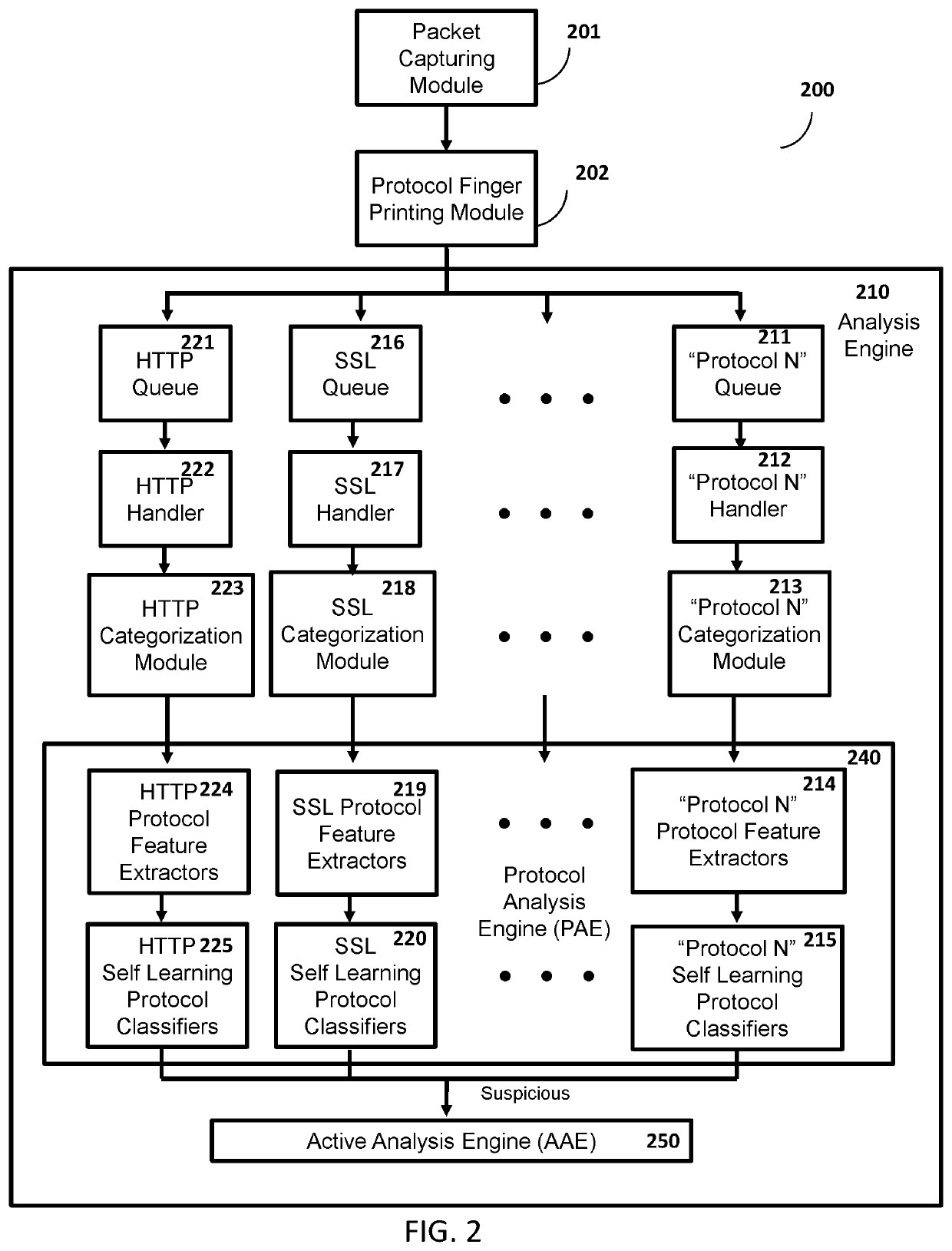Method and system for protection against network-based cyber threats
a network-based cyber threat and network protection technology, applied in the field of network security, can solve the problems of inability to provide sufficient protection against the current generation of cyber attacks, inability to realize the real-time transfer of user's sensitive information to attackers, and easy omission of both detection mechanisms
- Summary
- Abstract
- Description
- Claims
- Application Information
AI Technical Summary
Benefits of technology
Problems solved by technology
Method used
Image
Examples
Embodiment Construction
[0071]While various embodiments of the invention have been shown and described herein, it will be obvious to those skilled in the art that such embodiments are provided by way of example only. Numerous variations, changes, and substitutions may occur to those skilled in the art without departing from the invention. It should be understood that various alternatives to the embodiments of the invention described herein may be employed.
[0072]Specific embodiments of the disclosed method and system will now be described with reference to the drawings. Nothing in this detailed description is intended to imply that any particular step, component, or feature is essential to the invention.
[0073]An Active Cyber Defense System can comprise a cyber attacks protection framework designed specifically to stop a variety of cyber threats like Drive-by Exploits, Malicious Binaries, Data Exfiltration, Social Engineering and Credential Stealing attacks. The system can inspect network traffic in real-tim...
PUM
 Login to View More
Login to View More Abstract
Description
Claims
Application Information
 Login to View More
Login to View More - R&D
- Intellectual Property
- Life Sciences
- Materials
- Tech Scout
- Unparalleled Data Quality
- Higher Quality Content
- 60% Fewer Hallucinations
Browse by: Latest US Patents, China's latest patents, Technical Efficacy Thesaurus, Application Domain, Technology Topic, Popular Technical Reports.
© 2025 PatSnap. All rights reserved.Legal|Privacy policy|Modern Slavery Act Transparency Statement|Sitemap|About US| Contact US: help@patsnap.com



